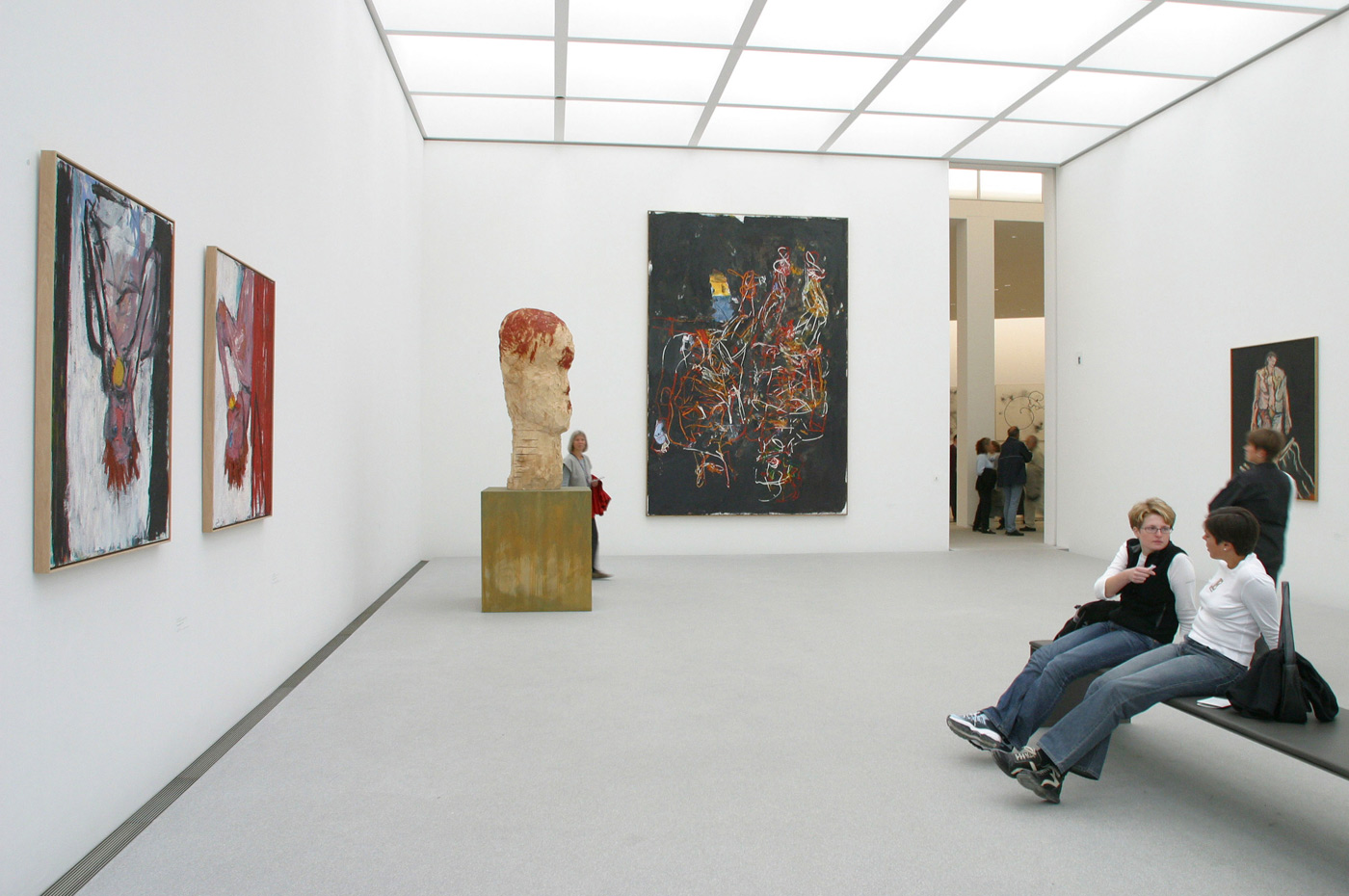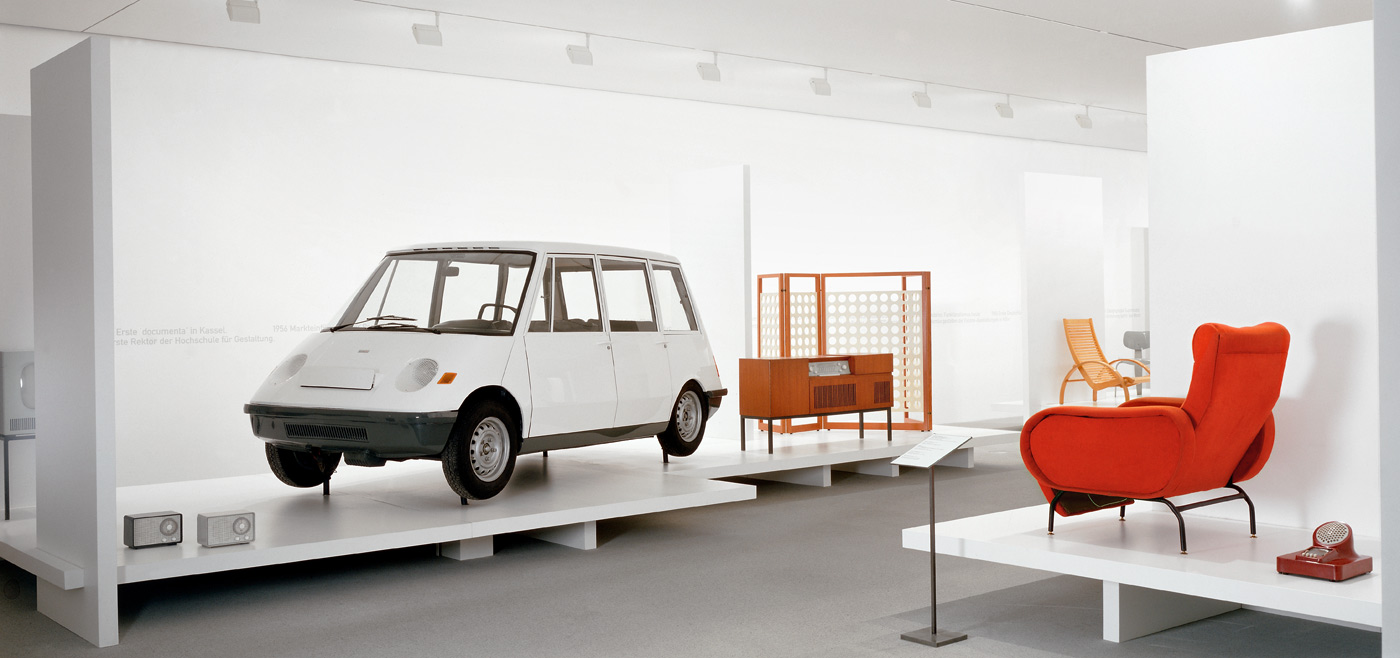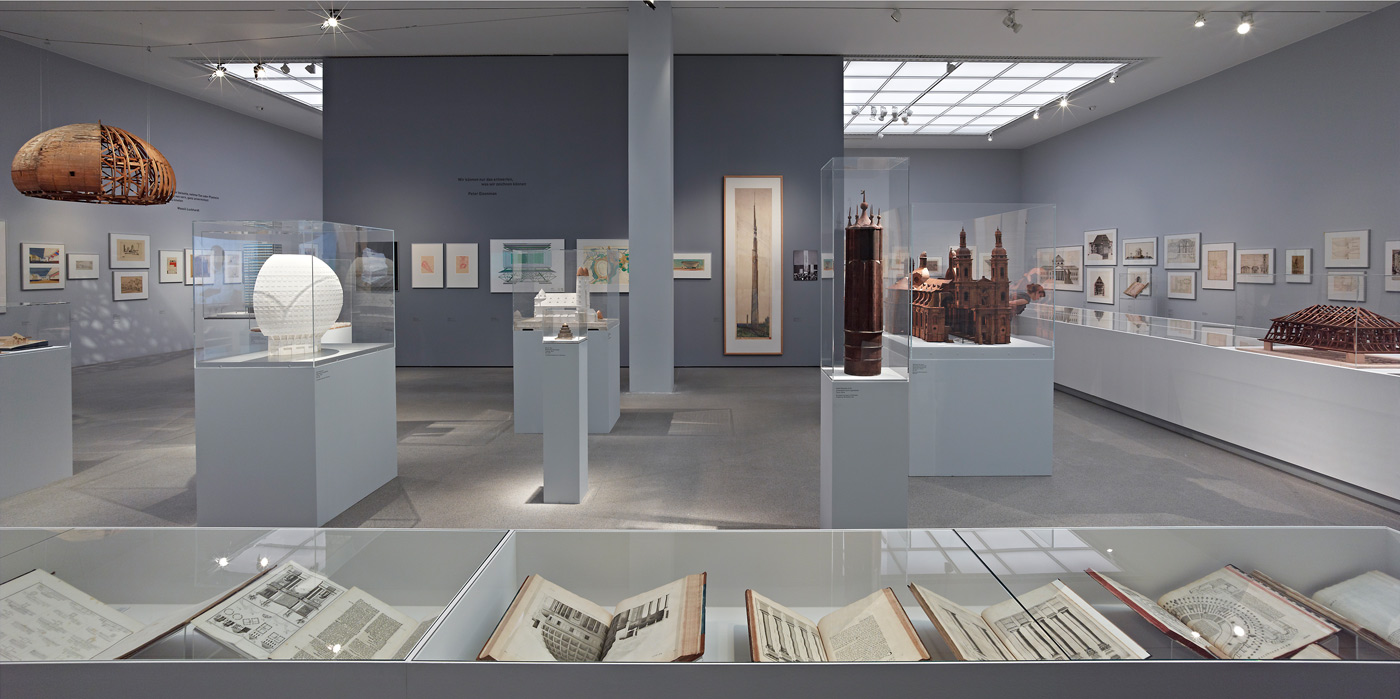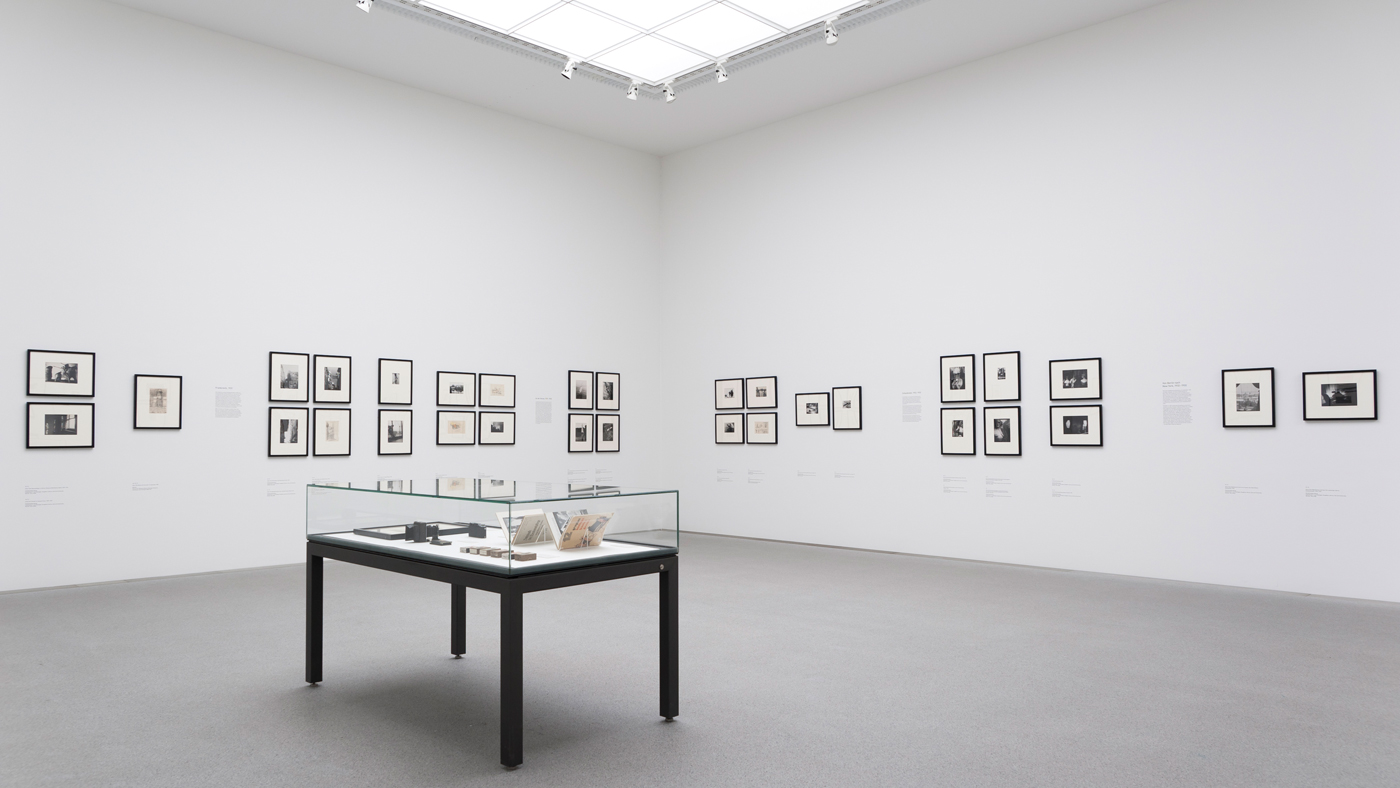
The Modern Art Collection (Sammlung Moderne Kunst) of the Bayerische Staatsgemäldesammlungen presents major works by international artists in the areas of painting, sculpture, photography and media art: from Expressionism, Neue Sachlichkeit and Surrealism through to the most important movements of European postwar art, as well as American art since the 1960s. Relevant and outstanding contemporary works supplement the Collection’s spectrum. The Collection, which is constantly growing, contains meanwhile more than 5,400 works, approx. 400 of which can be seen in temporary presentations and special exhibitions. The goal is not an encyclopaedic collection claiming the greatest possible comprehensiveness, but rather emphasizes standard-setting artistic considerations in which decisive upheavals and new definitions of modern art are reflected. A particular characteristic of the presentation of art after 1945 is the principle of ‘artist rooms’, each of which is devoted to the artworks and installations of a single artist, such as Joseph Beuys, Georg Baselitz, Max Beckmann, Donald Judd, Dan Flavin and Fred Sandback. This concept also takes account of the collection strategy, which strongly concentrates on individual positions and the formation of focal points.

Established as of 1907, Die Neue Sammlung is regarded as the world’s first design museum. The museum houses the largest design collection in the world, with some 80,000 objects from the fields of industrial design, the applied arts and graphic design.
The collection’s high quality, its diversity and historical depth allows it to present, in a unique way, all kinds of different aspects of the development of design. Ground-breaking special exhibitions and cooperation projects provide a lively forum for contemporary trends.
Since the years 2000 and 2002, Die Neue Sammlung – a museum run by the Free State of Bavaria – has boasted two large new buildings featuring trans-disciplinary concepts: Neues Museum für Kunst und Design (New Museum of Art and Design) in Nuremberg and Pinakothek der Moderne in Munich. In these establishments, for the first time, comprehensive permanent exhibitions of design have been made available to the general public, side by side with the fine arts, graphics and architecture.

The Architekturmuseum der Technischen Universität München presents a series of exhibitions on the history of architecture and on current figures and international developments in the world of architecture. Due to a continuous new acquisitions policy, the largest specialist and research archive in Germany specifically dedicated to architectural matters now contains some 500,000 drawings, 150,000 photographs, and 1000 models, and a wealth of documents dating from the 16th century onwards. The origin of the collection lies in the university’s study collection, founded in 1868 when it was still known as the Polytechnische Schule. Subsequently, the core collection area is on German architecture of the 19th and 20th century. The museum’s collection activities, however, are broad in scope and include important international projects and competition design proposals by such architects as Daniel Libeskind and Shigeru Ban. As a faculty institute equipped with an archive and exhibition rooms, the Architekturmuseum commands a unique place in Germany and unites museological collection, teaching, and research.

The Staatliche Graphische Sammlung München ranks alongside the collections of prints and drawings in Berlin and Dresden as one of the most outstanding institutions of its kind in Germany and houses one of the leading treasuries of graphic arts in the world. The collection comprises more than 400,000 works on paper consisting of approximately 45,000 drawings and 350,000 prints, ranging in date from the fourteenth century to the present day.
Highlights are the outstanding collection of single-leaf woodcuts and copperplate engravings from the fifteenth century, German drawings and prints from the time of Albrecht Dürer, drawings from the Italian Renaissance, and Dutch graphics from the sixteenth and seventeenth centuries. Also prominent are significant holdings of German drawings from the baroque period and the nineteenth century, particularly works by southern German artists associated with King Ludwig I (r. 1825-1848), and the renowned group of drawings by Hans von Marées. The steady growth of the collection is committed to fill gaps in its existing holdings. Fastest expanding segment is the collection of works by contemporary international artists.